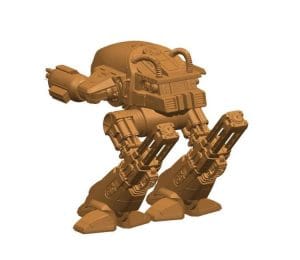
Introduction
3D printing is an amazing technology that gives us the ability to create parts and products that are otherwise impossible to make. However, one of the limitations of 3D printing is that the parts can be quite fragile. This is especially true for parts that are printed with a low infill percentage or have thin walls. In this blog post, we will give you 5 tips to strengthen your 3D printed parts. With these tips, you will be able to make parts that are stronger, more durable, and less likely to break.
Use a thicker layer height
If you want to make strong D prints, one of the best things you can do is se a thicker layer height. The thicker the layer height, the stronger the print will be. Of course, this comes with a trade-off – thicker layer heights will take longer to print. But if you’re looking for strength, it’s worth the extra time.
Use a lower infill percentage
When it comes to 3D printing, one of the most important factors in determining the strength of your printed parts is infill percentage. In general, the higher the infill percentage, the stronger your part will be. However, there are times when you may want to use a lower infill percentage. For example, if you are printing a part that does not need to be very strong or if you are trying to save on material costs, a lower infill percentage can be used.
There are a few things to keep in mind when using a lower infill percentage. First, you will likely need to increase the wall thickness of your part to compensate for the weaker infill. Second, your part may not be as aesthetically pleasing since the lower infill can leave voids or holes in your part. Finally, you will need to be careful not to overstress your part as it may break more easily than a similar part with a higher infill percentage.
Overall, using a lower infill percentage can be a good way to save on material costs or print parts that do not need to be very strong. Just be sure to take into account the trade-offs mentioned above before deciding whether or not to use a lower infill percentage for your next project.
Use supports
One of the most important aspects of making strong D prints is to use supports. Supports help to reinforce your print and make it less likely to warp or crack.
There are a few things to keep in mind when using supports:
1. Make sure that your supports are properly aligned with your print. If they’re not, your print may not be as strong as it could be.
2. Avoid using too many supports, as this can make your print more difficult to remove from the build plate.
3. Use thicker supports for heavier or larger prints. Thinner supports may not be able to provide enough reinforcement for these types of prints.
4. Use a support material that is easy to remove, such as PLA or PVA. This will make post-processing easier and prevent damage to your print.
Use a brim
When it comes to making strong D prints, one of the most important things you can do is to use a brim. This will help to add strength and stability to your print, and will also prevent the edges from curling up. You can add a brim by using the settings in your slicing software, or by manually adding one around the perimeter of your print.
Conclusion
3D printing is an amazing technology that allows us to create objects that would otherwise be impossible to make. However, 3D printed parts can sometimes be weak and fragile. In this article, we’ve shared 5 tips to help you make stronger 3D prints. By following these tips, you’ll be able to produce 3D prints that are more durable and less likely to break.


